Day 3 Part 1 Trip to Saqqara.
The next day we awoke early and went to the hotel for a fantastic breakfast.
There were 5 or 6 different areas for all manner of foods. Below was the hot breakfast stuff including the ever-present beef bacon, sautéed mushrooms, eggs, etc. At the end was another counter with a wide variety of breads.
The fruit (and at night dessert) counter was the best. There was mango juice and the best strawberry juice I have ever had!
This one had cold cuts, cheeses and Arab salt dishes like hummus and baba ganoush.
...and you could sit next to the windows and watch the Nile while you were dining.
Looks like spousal unit D (above) is already tired of me taking pictures and I have only just begun!
After our hearty breakfast we were in the bus again, this time headed for the plains of Saqqara. Once again I was fascinated with the worlds outside our bus. Apologies for the quality of the "moving" pictures. They capture stories even when they are not beautiful art. I really wonder what this was!
And I don't have enough cultural knowledge to know what this line was all about.
What do you suppose these two buddies are chatting about?
Here you can see how they just shear off a vertical segment of a building to put in a new freeway.
This is just a taste of the feel of the city.
As we headed more into the countryside, we drove along a canal or stream bringing water from the Nile. There were lots of birds and donkey or horse carts along the way.
This heron was looking for some breakfast.
I just like this shot. It seems so impressionistic. It's an egret flying over the canal.
Here's a mosque in the countryside.
The donkey carts were loaded with vegetation. I think this is sugar cane, which was being harvested while we were there.
Then as we moved into more deserts terrain, we looked up and there it was - the step pyramid of Djoser!
This had been the site of a booming necropolis during the Old Kingdom and is the source of many innovations in the memorialization of the king.
It is really impossible to take a bad picture of these monuments, so I will try to restrain myself in terms of photos, but here is the mandatory image with no human impediment.
The pyramid complex had been surrounded by a 34 foot high wall with multiple bastions at regular intervals.
Here our guide stands in front of one of the bastions and explains the history of the Step pyramid to our group.
Wikipedia has a lovely diagram of the interior of the temple complex. (https://en.wikipedia.org/wiki/Pyramid_of_Djoser)
Complex layout: 1) step pyramid, 2) south tomb and chapel, 3) Sed festival complex, 4) 'T' temple, 5) south court, 6) south pavilion, 7) north pavilion, 8) mortuary temple, 9) western mounds, 10) colonnaded entrance, 11) north court, 12) north galleries, 13) step tombs, 14) serdab, and 15) north altar
After a narrow passage you come out into a room of pillars that lead to the South court complex. The colonnade pillars are said to be modeled on the image of bundles of reeds and were originally some 20 feet tall.
The placement of the pillars allows for alcoves that probably originally contained sculptures.
There are passages from the colonnade that led to the "heb-sed" court and on the west (left) to a small sanctuary where there was probably a statue of King Netjerikhet (later renamed Djoser in the New Kingdom histories). (Remember the Diorite statue in the Egyptian Museum?)
I love the texture of the columns.
The colonnade exits onto the south court. (we have gone through number 10 to number 5 on the wikipedia diagram and you can see that all attention is on the pyramid to the right of our travelers (East).
This pyramid may have been the most impressive sight of the whole trip. I am not sure why, but it moved me immensely. Perhaps it is the fact of seeing a monument that is 4600 years old. Perhaps it is the aura and sanctity of the place, perhaps it is the awe in the efforts to build such a long-standing monumental edifice.
I read that the pyramid is in danger of collapse because of earthquakes. I hope that is not the case.
In the distance we could see an archaeological dig site.
Behind it is the great pyramid of Khufu and the mandated camel.
Djoser ruled for either 19 or 38 years depending on what theory you believe and may have been the first king of the third dynasty (or might not have been).
The two kingdoms were united around 2686 BCE and Djoser ruled after that date. The base of this statue in the Egyptian Museum shows both the two ladies (vulture and cobra) and the nsw-bty hieroglyphs which indicate he was king of both kingdoms (the bee and the flowering sedge plant). (Photo by Djehouty https://commons.wikimedia.org/wiki/File:%C3%84gyptisches_Museum_Kairo_2016-03-29_Djoser_03.jpg)
How could I resist this shot?
This guy wanted me to take his picture (and I guess he wanted money afterwards, but since I wasn't really that interested in the shot he didn't get anything.) It is a cute shot.
If you are interested in a Virtual tour of part of the Step pyramid complex check this out : https://egymonuments.gov.eg/monuments/the-step-pyramid-complex-of-djoser/
We also got to enter the tomb of Unas.
You could hardly tell that it was a pyramid. It looked like a pile of rubble,
Daniel Csörföly has a better shot on Wikipedia than I could get. (https://commons.wikimedia.org/wiki/File:SakkaraPyramidsEgypt_2007feb1-16_byDanielCsorfoly.JPG)
so we went down the stairs and sure enough there was a burial chamber.
Here is an interior shot courtesy of Vincent Brown on wikipedia. (https://commons.wikimedia.org/wiki/File:Burial_chamber_in_Unas%27_pyramid.jpg)
If you are interested wikipedia also has a good description of the grounds and of course a map of the temple complex.
Layout of Unas's valley temple. In order: (1) Colonnaded entrance court; (2) Entrance hall; (3) South hall; (4a and b) Secondary entrances; (5) Main cult hall; (6) Storerooms; (7) Passage leading to (8) the Causeway.
I had to take a couple of last shots of my now favorite pyramid.
And of course this one should be a poster!








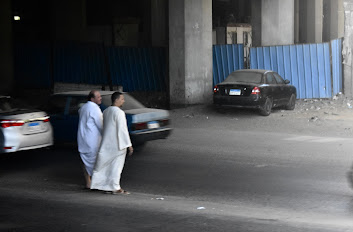


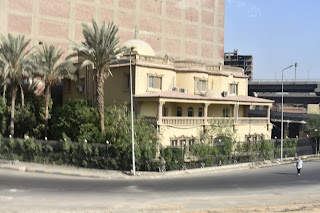




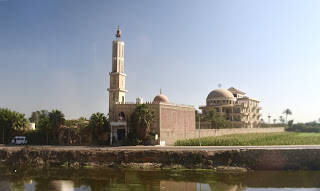
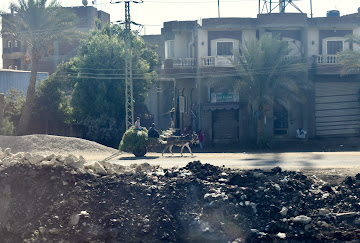




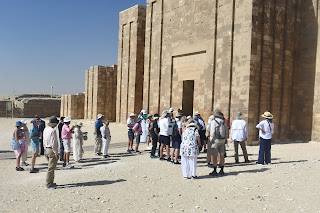






























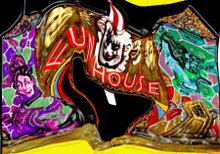

No comments:
Post a Comment